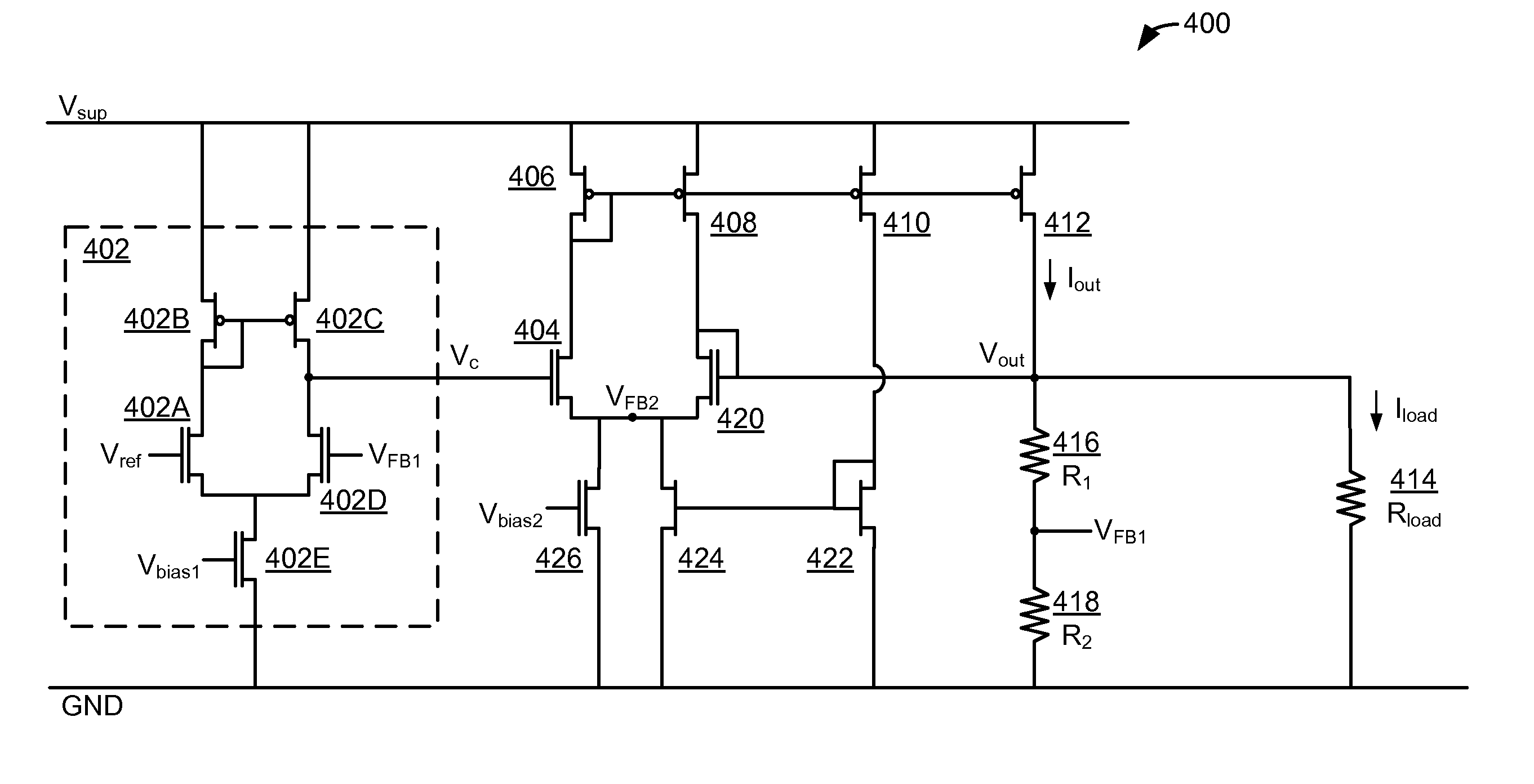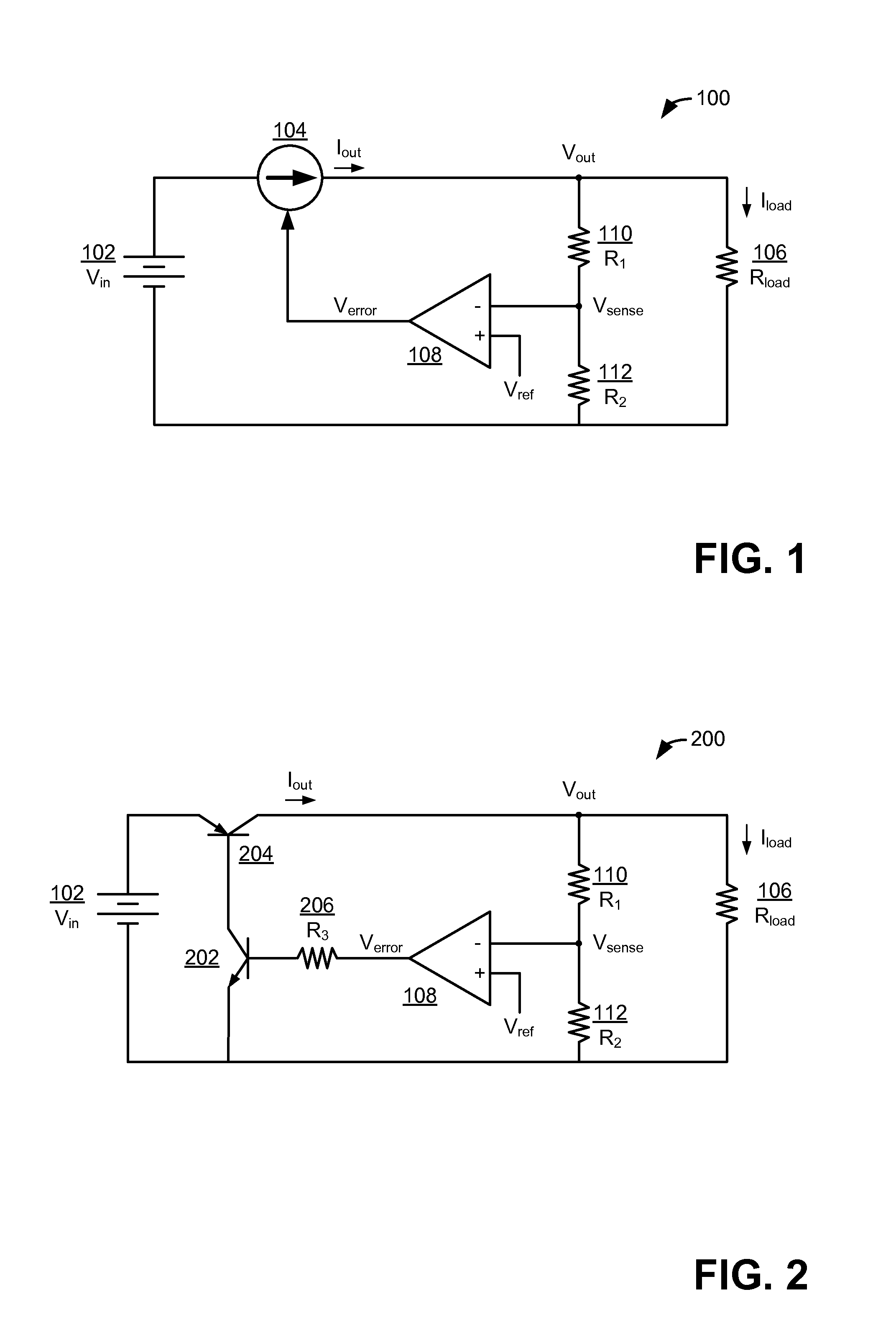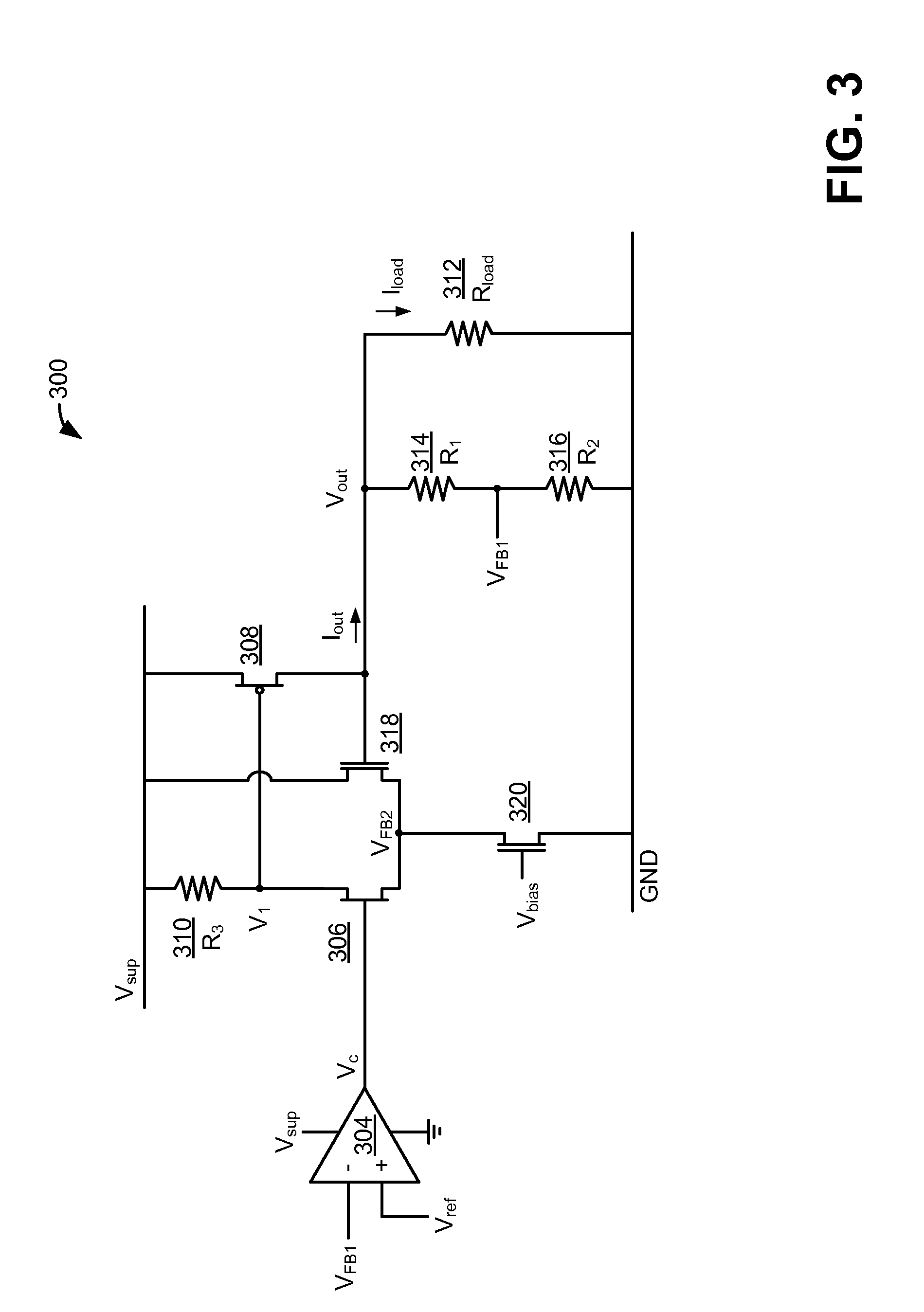Voltage regulator
a voltage regulator and voltage regulator technology, applied in the direction of electric variable regulation, process and machine control, instruments, etc., can solve the problems of large or potentially infinite transient response time, unstable feedback loop of the regulator that controls the current source, and improper circuit operation
- Summary
- Abstract
- Description
- Claims
- Application Information
AI Technical Summary
Benefits of technology
Problems solved by technology
Method used
Image
Examples
Embodiment Construction
[0025]As discussed above, to enable conventional voltage regulators to operate stably and accurately for different loads, voltage regulators are typically implemented with one or more capacitors coupled to their output terminal. Applicants have recognized and appreciated, though, that such a modification may not stabilize a regulator or enable it to operate over a suitable load range. Further, Applicants have recognized and appreciated that as capacitors are added to the regulator circuit, the transient time of the regulator grows, which may reduce the regulators' ability to quickly control the output voltage. For regulators that include several capacitors and can operate over a very wide range of load circuits and characteristics, including regulators using Nested Miller Compensation (NMC) techniques, the transient response time can be very high. Regulators with high transient response times may not properly control the voltage output for fast transients, which can cause errors to ...
PUM
 Login to View More
Login to View More Abstract
Description
Claims
Application Information
 Login to View More
Login to View More - R&D
- Intellectual Property
- Life Sciences
- Materials
- Tech Scout
- Unparalleled Data Quality
- Higher Quality Content
- 60% Fewer Hallucinations
Browse by: Latest US Patents, China's latest patents, Technical Efficacy Thesaurus, Application Domain, Technology Topic, Popular Technical Reports.
© 2025 PatSnap. All rights reserved.Legal|Privacy policy|Modern Slavery Act Transparency Statement|Sitemap|About US| Contact US: help@patsnap.com



